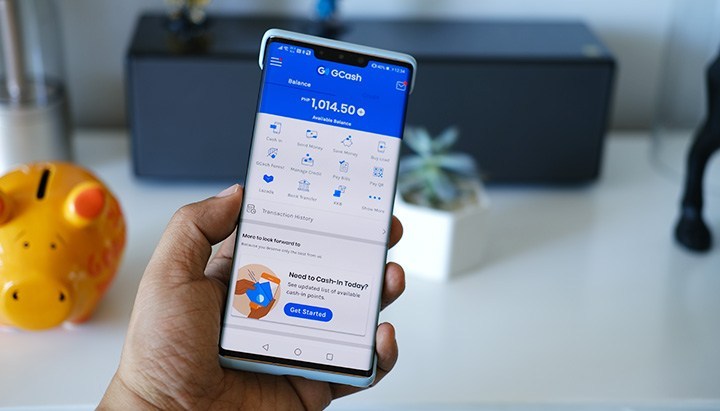It’s been more than a year into the pandemic and also more than a year since the Philippine government initiated its quarantine protocols in key cities. If you’re reading this, we hope that you’re well. We have been forced into this “new normal,” which has never been easy for many people. Many have also turned to technology during these trying times. Here’s how technology helped us cope.
Table of Contents

The internet has always been a hot topic, especially in the Philippines especially during the pandemic. The need for a fast, stable, and affordable internet connection is one of the biggest demands. As people started working and studying from home, we realized that not everyone has access to a good internet connection. Some students even have to climb a tree to get a good signal to attend online classes.
While internet service providers have been rapidly upgrading their networks and services to accommodate the demand, even with the third telco player’s launch, it’s going to take a while before everyone has good access to the internet.

Smartphones and tablets were already popular even before the pandemic. It’s nothing more but a tool for communications and entertainment. But when the pandemic started, it became more than that. Like laptops and PCs, it has become an essential device for online learning, work, access to delivery services, and running a home-based business. If you have a smartphone or a tablet right now to access the internet, consider yourself lucky.

When quarantine policies took effect, almost everyone must stay at home, raising concerns on how to buy their necessities given the limited mobility. Online delivery services solved this problem by allowing us to order goods online and have them delivered to our homes. It made it safer for people staying at home, but it also provided income for the riders of those platforms.

Fund transfers are important during the pandemic. Given the restrictions to mobility and business hours, people’s physical access to banks was also limited. While digital banks and wallets were already available even before the pandemic, the demand increased as we rely more on digital platforms.
People are using it to send money to loved ones, purchase goods online, run a home business, or gather donations. LGUs have also used it to send financial aid to their constituents. The cashless feature also helped keep users safe from the virus that could be contracted by using cash.

Video conferencing platforms such as Zoom, Skype, and Google Meet gained popularity as we shifted to online learning and meetings. Aside from educational and work purposes, we also used it to connect with loved ones we couldn’t be with personally, helping us maintain current relationships and create new ones. On the other hand, messaging platforms also provided the same effect by giving us a quick and efficient means of communicating.

At the height of the quarantine, physical access to shops and malls is restricted. Given that we love going to malls, we resorted to online shopping platforms like Lazada and Shopee to buy the products we want. We can also use it for digital window shopping if you want to relax and browse around. It’s a different experience from physical shopping, but scrolling through the vast catalog of products and filling your digital cart of things that you might or might not buy, can be relaxing at times.
Many Filipinos lost their jobs during the pandemic, and many resorted to online business as their main source of income. Thanks to social media and online selling platforms, they could revive their livelihood or augment their income. This has also popularized live selling, allowing business owners to sell goods to a wider audience online.

Entertainment is a challenge during a pandemic as we can’t go out and enter places of leisure. As a result, we resorted to online entertainment, including gaming on the PC or mobile, and streaming content such as music and videos on platforms like Spotify and Netflix. Platforms like YouTube also provide a treasure trove of content for self-development and tutorials, allowing us to learn new skills like baking and cooking.
Technology is one thing we take for granted, and we often see it as just something that we purchase and utilize. But because of the pandemic, we can see that it can be more than that. It can jumpstart a livelihood, help run a business, and keep us sustained. Now that we have entered a new type of quarantine, we hope to utilize these technologies for the better.

YugaTech.com is the largest and longest-running technology site in the Philippines. Originally established in October 2002, the site was transformed into a full-fledged technology platform in 2005.
How to transfer, withdraw money from PayPal to GCash
Prices of Starlink satellite in the Philippines
Install Google GBox to Huawei smartphones
Pag-IBIG MP2 online application
How to check PhilHealth contributions online
How to find your SIM card serial number
Globe, PLDT, Converge, Sky: Unli fiber internet plans compared
10 biggest games in the Google Play Store
LTO periodic medical exam for 10-year licenses
Netflix codes to unlock hidden TV shows, movies
Apple, Asus, Cherry Mobile, Huawei, LG, Nokia, Oppo, Samsung, Sony, Vivo, Xiaomi, Lenovo, Infinix Mobile, Pocophone, Honor, iPhone, OnePlus, Tecno, Realme, HTC, Gionee, Kata, IQ00, Redmi, Razer, CloudFone, Motorola, Panasonic, TCL, Wiko
Best Android smartphones between PHP 20,000 - 25,000
Smartphones under PHP 10,000 in the Philippines
Smartphones under PHP 12K Philippines
Best smartphones for kids under PHP 7,000
Smartphones under PHP 15,000 in the Philippines
Best Android smartphones between PHP 15,000 - 20,000
Smartphones under PHP 20,000 in the Philippines
Most affordable 5G phones in the Philippines under PHP 20K
5G smartphones in the Philippines under PHP 16K
Smartphone pricelist Philippines 2024
Smartphone pricelist Philippines 2023
Smartphone pricelist Philippines 2022
Smartphone pricelist Philippines 2021
Smartphone pricelist Philippines 2020